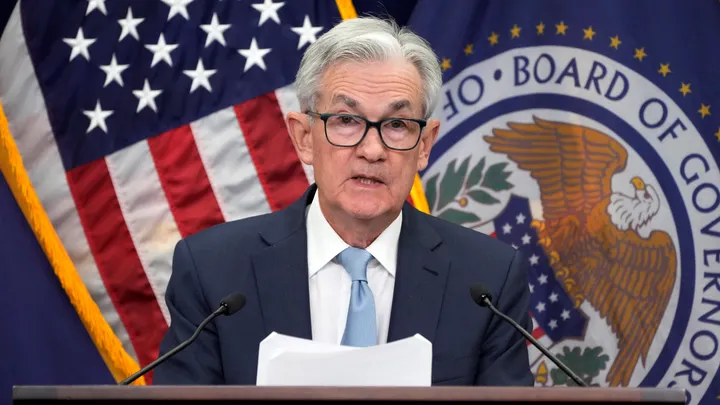The Federal Reserve on Wednesday raised its benchmark interest rate by a quarter of a point, forging ahead with its fight against stubborn inflation despite a spate of bank failures and a growing crisis within the financial sector.
The unanimous decision puts the key benchmark federal funds rate at a range of 4.75% to 5%, the highest since 2007, from near zero just one year ago. It marks the ninth consecutive rate increase aimed at combating high inflation.
Policymakers signaled that rate increases could soon come to an end, suggesting that future hikes will ultimately hinge on incoming data reports.
“The Committee will closely monitor incoming information and assess the implications for monetary policy,” the Fed said in its post-meeting statement. “The Committee anticipates that some additional policy firming may be appropriate in order to attain a stance of monetary policy that is sufficiently restrictive to return inflation to 2 percent over time.”
Officials dropped a phrase used in their previous eight statements that said the committee anticipated “ongoing increases” in the fed funds rate would be “appropriate.”
Fed officials are in the midst of the most aggressive tightening campaign since the 1980s as they try to crush inflation that is still running about three times higher than the pre-pandemic average.
But the stunning implosion of Silicon Valley Bank earlier this month complicated the Fed’s efforts, because the rapid rise in interest rates played a direct role in the bank’s failures. Increasing interest rates again could exacerbate instability within the financial system.
Officials said it is too soon to say how banking-sector stress will affect the broader economy.
“The U.S. banking system is sound and resilient,” the Fed said. “Recent developments are likely to result in tighter credit conditions for households and businesses and to weigh on economic activity, hiring, and inflation. The extent of these effects is uncertain. The Committee remains highly attentive to inflation risks.”
New economic projections laid out after the meeting show that a majority of Fed officials who participated in the meeting expect rates to rise to 5.1% this year, implying just one more quarter-point increase. The quarterly forecasts indicate the U.S. central bank will not cut interest rates until 2024, to a rate of about 4.3%.
Officials also indicated that economic growth will slow sharply this year and that unemployment will march higher to a rate of 4.5% as rates hikes bring the U.S. to the brink of a recession — projections that are largely unchanged from December. The Fed expects the jobless rate to remain elevated in 2024 and 2025 as steeper rates continue to take their toll by pushing up borrowing costs.
That marks a dovish swing from just two weeks ago, when Chairman Jerome Powell suggested the Fed may need to pick up the pace of rate increases and raise rates higher than previously anticipated in the face of hotter-than-expected economic data reports.
The Labor Department reported last week that the consumer price index, a broad measure of the price for everyday goods including gasoline, groceries and rents, rose 0.4% in February from the previous month. Prices climbed 6% on an annual basis. In a more troubling development, core prices — which strip out the more volatile measurements of food and energy — climbed 0.5% over the course of February, slightly faster than in January. On a 12-month basis, core prices are up 5.5%.
“Nothing about the data suggests to me that we’ve tightened too much,” Powell said on March 7.
Days of turmoil within the banking sector muddied the waters for the Fed, which was forced to strike a delicate balance between price stability and financial stability.
Silicon Valley Bank largely catered to tech companies, venture capital firms and high-net-worth individuals, which were pulling cash at a rapid pace as the once red-hot tech sector cooled. When the bank announced it was trying to raise capital from investors and that it would take a $1.3 billion loss on long-term securities that had tumbled in value amid higher interest rates, depositors panicked and a bank run ensued.
Within days, U.S. regulators took extraordinary steps to contain the fallout from the bank’s collapse and shore up wavering confidence in the financial system, including protecting all deposits at the two institutions — even those holding funds that exceeded the FDIC’s $250,000 insurance limit.
The Fed also launched a new emergency backstop for lenders to help them meet deposit withdrawals under favorable terms.
Still, the banking crisis has reignited fears over a looming recession this year, with experts warning that a downturn is increasingly likely as borrowing could become more expensive.
“The probability of the Fed sticking the landing on this without causing a recession, increasing unemployment, and preventing further consolidation in the domestic banking sector would appear to be quite low,” said Joe Brusuelas, chief economist at RSM.

